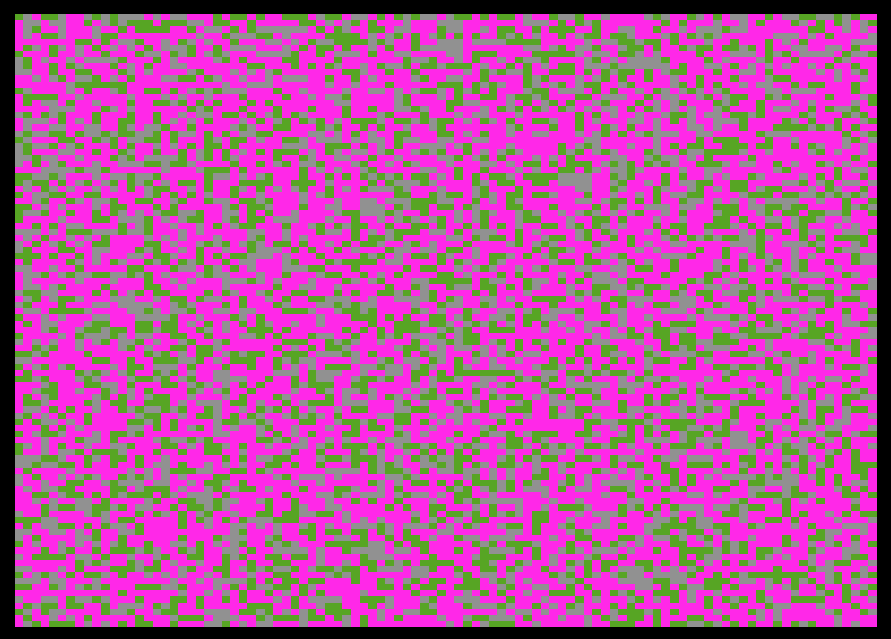Decided I want my game to use some sort of random world generation.
However I have no idea where to start.
I made a super simple generator which basically has a 50% chance to spawn a Stone or a Grass tile, and then it has a 80% chance to spawn a pink tile on the above layer of tiles : Grey = Stone, Green = Grass, Pink = Pink)

However,this is not at all what I want.
What I do want is a island which has a specific biome (like forest or desert, depending on what the player choose), and if it is a desert it should generate stone and sand, and sometimes (or rarely might be a better word) generate a "puddle" of water. But if it's a forest it should generate grass, trees and stone, mountains etc.
So depending on the biome the generation should be different.
I also want the island to be surrounded by water.
But I have no idea, at all how to accomplish this.









